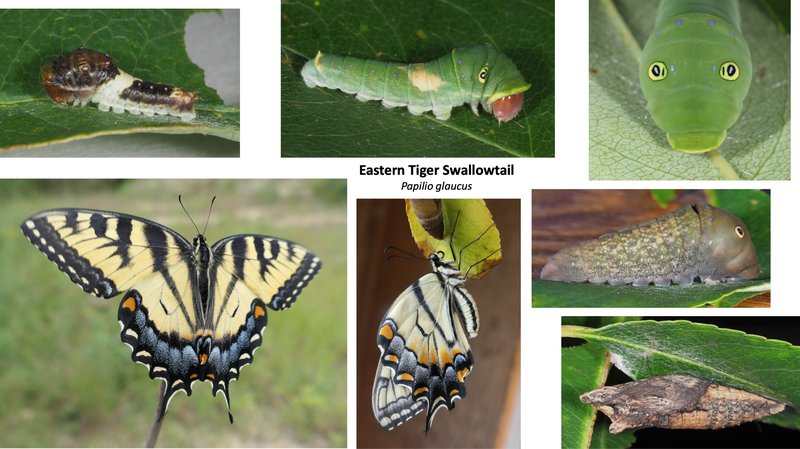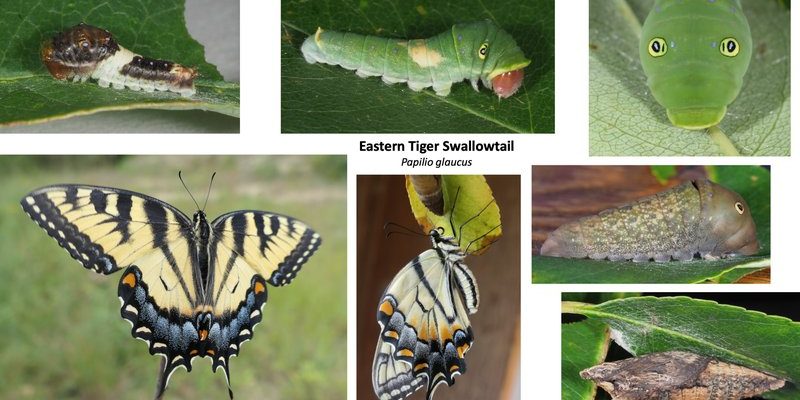
Picture this: A swallowtail butterfly begins its life not as a dazzling adult but as a small, unassuming egg. This small phase is just the tip of the iceberg in a captivating journey that will lead it through stages like a caterpillar and chrysalis before it finally emerges as the beautiful butterfly we admire. Let’s dive into this process, exploring how each stage is crucial for survival and how these little creatures fit into the ecosystem around us.
From Egg to Caterpillar: The Beginning of Life
The lifecycle of a swallowtail butterfly begins with **the egg stage**. These eggs are often laid on the leaves of specific plants—usually the host plants that the caterpillars will eventually eat. Depending on the species, a female swallowtail can lay anywhere from a few dozen to several hundred eggs at a time. It’s like she’s planting a garden for the next generation, ensuring there will be plenty of food around for the hungry larvae.
Once the eggs hatch, usually within a week or two, tiny caterpillars emerge. These baby caterpillars, often called **larvae**, are voracious eaters. They start munching on the leaves of their host plants almost immediately. One interesting thing about swallowtail caterpillars is their ability to change color and appearance as they grow. They can start as small, green caterpillars but can also take on shades of brown or even mimic the look of bird droppings to avoid predators. Honestly, it’s like they’re putting on costumes to stay safe!
During this phase, the caterpillars will molt several times, shedding their skin as they grow. This process is crucial as it allows them to increase in size. Each molt helps them develop stronger bodies and prepares them for the next stage of their incredible transformation. It’s a bit like going through a growth spurt as a teenager, gaining strength and confidence as they prepare to take on new challenges.
The Caterpillar Stage: Eating and Growing
After a few weeks of continuous munching and growing, the swallowtail caterpillar can reach several inches in length. This stage is marked by an intense focus on eating; they need to build enough energy and resources for what’s to come. Caterpillars are not picky eaters. Their diet includes leaves from plants like parsley, dill, and fennel. If you’ve got a garden, keep an eye out for these little eaters!
But here’s the thing: with great eating comes great responsibility. As caterpillars grow, they must also be mindful of predators. Birds, spiders, and other insects see them as tasty snacks. To protect themselves, swallowtail caterpillars have developed some clever defenses. For instance, when threatened, some caterpillars can mimic the look of a snake, puffing themselves up and wriggling to intimidate would-be predators.
This stage can last anywhere from 10 days to several weeks, depending on the species and environmental factors. As the caterpillar reaches maturity, it will start to search for a safe place to enter the next phase of its life. This preparation phase is crucial; they need to find a secure spot to turn into a butterfly, away from danger.
The Chrysalis Stage: Transformation Begins
Once the caterpillar finds a suitable location, it enters the **chrysalis stage**. This is where the real magic happens. The caterpillar attaches itself to a branch or leaf using silk and sheds its skin one final time. This time, it forms a protective casing known as a chrysalis (or pupa).
Inside this chrysalis, the caterpillar undergoes an astonishing transformation. Its body breaks down into a kind of soup, and the cells begin to reorganize to form the butterfly’s legs, wings, and eyes. It’s a truly fascinating process called **holometabolism**, where the transformation is so profound that the caterpillar becomes almost unrecognizable.
During this time, the chrysalis is vulnerable, so it often blends in with its surroundings. The color and texture of the chrysalis help it stay hidden from predators. This stage can last anywhere from a few weeks to several months, depending on the species and environmental conditions. The whole process is a beautiful reminder of the patience and resilience found in nature.
The Adult Butterfly: Emerging into the World
Finally, after spending weeks or even months inside the chrysalis, the moment arrives—the butterfly emerges. This stage is called **eclosion**. The butterfly breaks free from its chrysalis, but it’s not quite ready to take flight just yet. Its wings are crumpled and wet, and it needs time to pump fluid into them to expand and dry.
Once the wings are fully developed, the **swallowtail butterfly** can finally take its first flight. This is a thrilling moment, akin to a graduation day, where all the hard work and transformation culminate in freedom. Adult swallowtails can live for several weeks to several months, depending on the species and environmental conditions. As they soar through gardens and meadows, they begin the cycle anew, searching for mates and laying eggs to start the next generation’s journey.
This final stage serves not just as a new chapter for the butterfly, but as a crucial part of the ecosystem, pollinating flowers and contributing to the beauty of our environment. By understanding this lifecycle, we can appreciate these magnificent insects even more.
The Importance of Swallowtail Butterflies in Our Ecosystem
Swallowtail butterflies play an essential role in our ecosystem, acting as pollinators for a variety of plants. As they flit from flower to flower, they transfer pollen, which helps plants reproduce. This is vital for maintaining healthy ecosystems and ensuring that plants can continue to thrive.
Additionally, swallowtails are a part of the food chain. While they are beautiful creatures, they also serve as meals for birds and other predators. This cycle helps maintain balance in nature. By being aware of their lifecycle, we can better understand and appreciate their role in the environment.
Moreover, their presence in our gardens is a sign of a healthy ecosystem. If you notice these butterflies fluttering about, it usually means your plants and soil are in good shape. So, if you’re considering gardening or planting flowers, choosing plants that attract swallowtail butterflies can be a delightful way to invite these beautiful creatures into your space.
Conservation Efforts for Swallowtail Butterflies
Unfortunately, like many other species, swallowtail butterflies face challenges in their survival. Habitat loss, climate change, and pesticide use pose significant threats to their populations. Many organizations are working to protect these beautiful insects by creating butterfly-friendly habitats and promoting sustainable practices.
If you want to help, consider planting native flowers that provide food and shelter for swallowtail butterflies. Additionally, reducing pesticide use in your garden can create a safer environment for these delicate creatures. Every little bit helps!
You might be wondering how else you can contribute. Participating in local conservation efforts, supporting organizations focused on butterfly protection, and spreading awareness about their importance are excellent ways to show your support.
The lifecycle of a swallowtail butterfly is a remarkable journey filled with transformation and resilience. From its beginnings as a tiny egg to the majestic adult fluttering through gardens, each stage plays a vital role in the grand story of nature.
By appreciating and understanding this lifecycle, we can better appreciate the beauty of these insects and their essential role in our ecosystem. So, the next time you spot a swallowtail butterfly, take a moment to admire not just its beauty but the incredible journey it has made to get there. Together, let’s work to protect these enchanting creatures and the world they inhabit.

